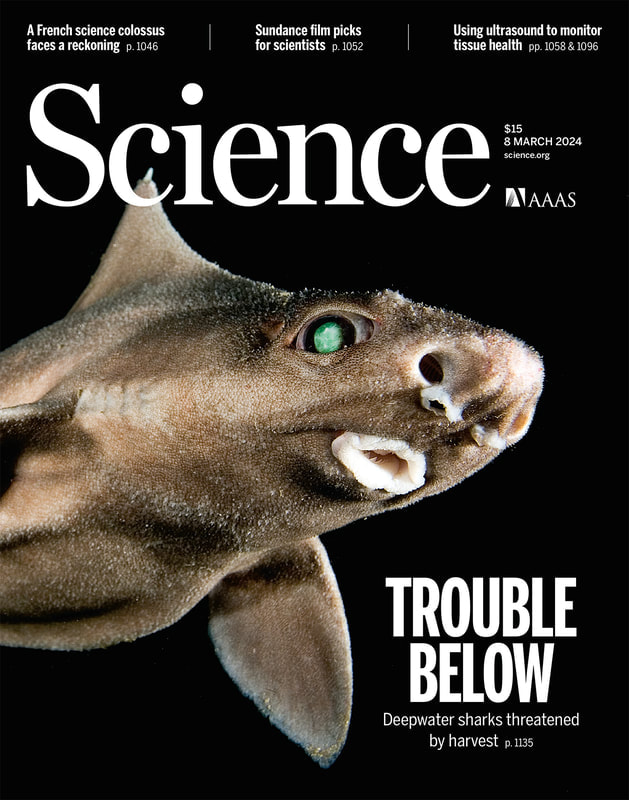|
Experts show deepwater sharks and rays are amongst the most sensitive marine vertebrates to overexploitation driven by international trade in meat and oil, urge conservation action PRESS RELEASE | March 7, 2024
“Deepwater sharks and rays are retained for their meat and liver oil”, said Dr. Brittany Finucci, a fisheries scientist based at the National Institute of Water and Atmospheric Research (NIWA) in New Zealand. “These are not new fisheries. However, the global expansion and diversification of deepwater shark and ray use and trade is a relatively new phenomenon.”
Deepwater sharks and rays - species that spend most of their lifespan at depths greater than 200 m - are among the most sensitive marine vertebrates to overexploitation because of their long lifespans and low reproductive rates. Deepwater sharks have biological characteristics similar to marine mammals, which were formerly exploited for their oils and are now highly protected. The Greenland Shark and the Leafscale Gulper Shark, for example, have population growth rates comparable to the Sperm Whale and the Walrus, respectively. “Many deepwater sharks and rays can only withstand very small amounts of fishing pressure”, said Dr. Nicholas Dulvy, Professor at Simon Fraser University. “Some species may take 30 years or more to mature, and possibly up to 150 years in the case of the Greenland Shark. Some only produce 12 pups throughout their entire life. Because of their relatively large size and widespread distribution, deepwater sharks and rays play a vital ecological role, concentrating and dispersing nutrients throughout deep ocean habitats” “Our results highlight that it is time to think about regulating liver oil trade,” said Dr. Rima Jabado, Deputy Chair of the IUCN Species Survival Commission (SSC) and Chair of the IUCN SSC Shark Specialist Group. “There has been enormous success in regulating the shark fin trade but trade and fishing regulations specific to deepwater sharks and rays are urgently needed. This could include national protections, regulations on deepwater fisheries, as well as listing species on Appendix II of the Convention on International Trade in Endangered Species of Wild Fauna and Flora (CITES). Deepwater sharks and rays have been out of sight, out of mind for too long. Now is the time to take action to prevent further endangerment.” Full publication: The paper can be accessed using this link Comments are closed.
|


 RSS Feed
RSS Feed